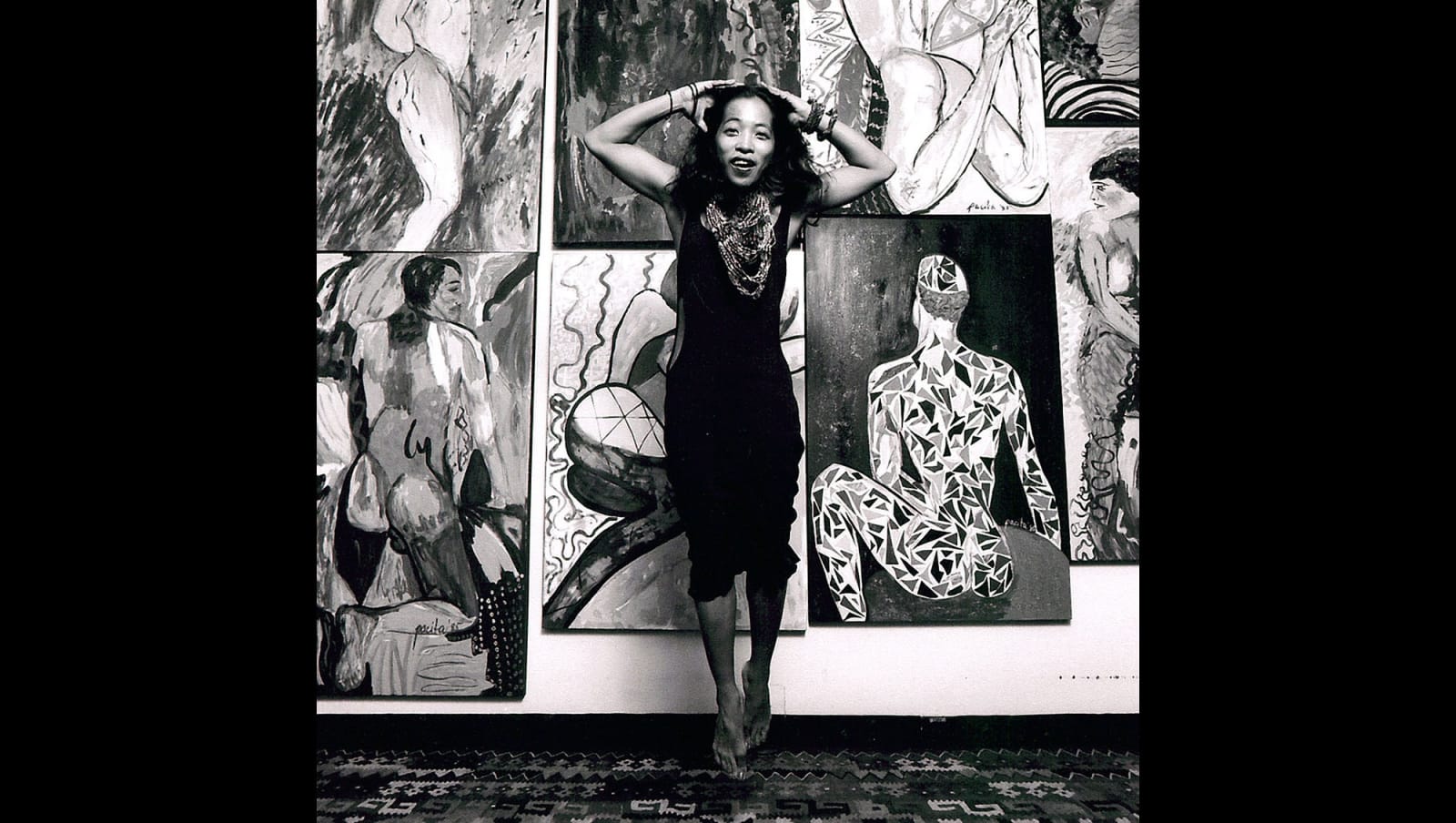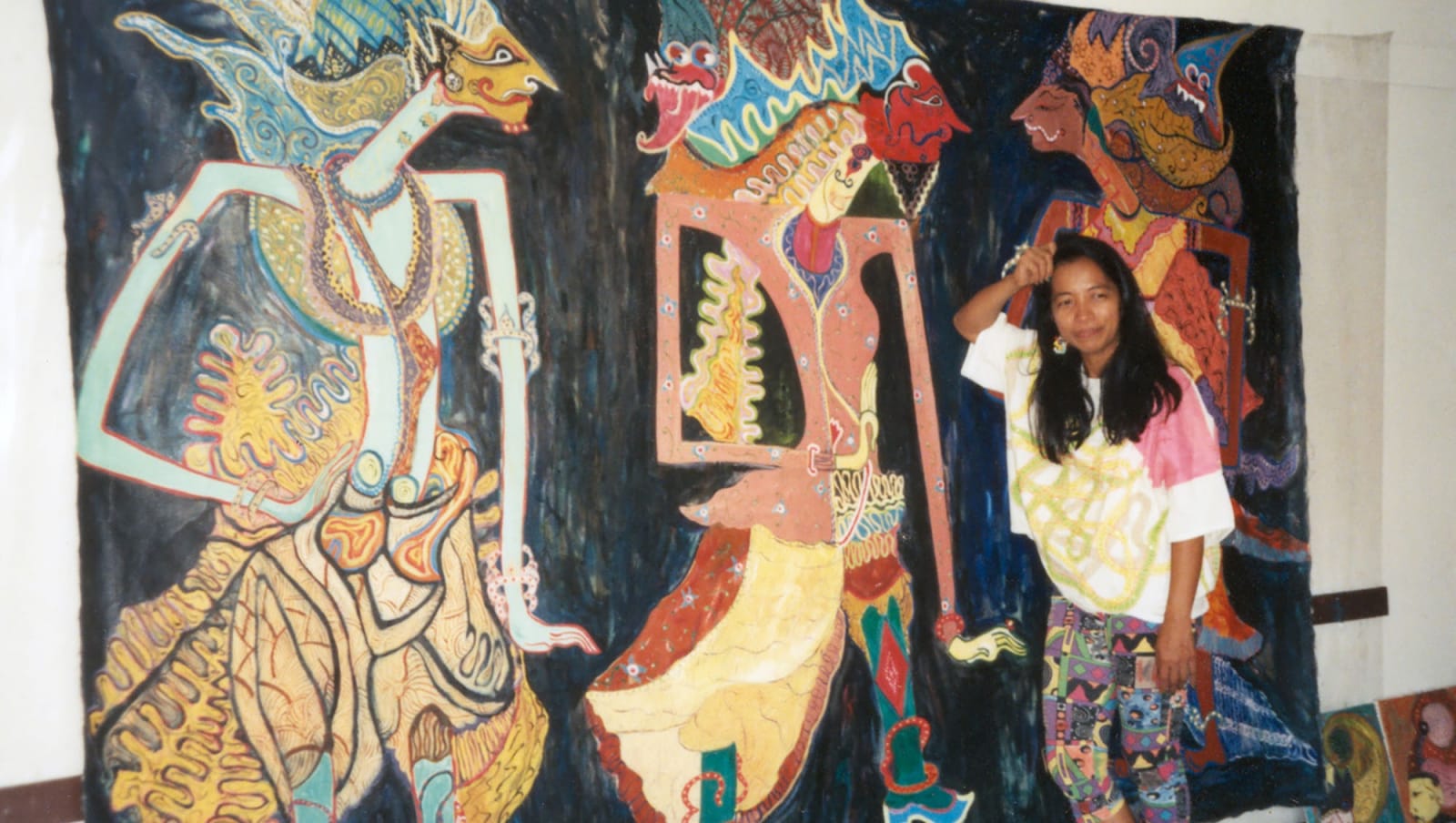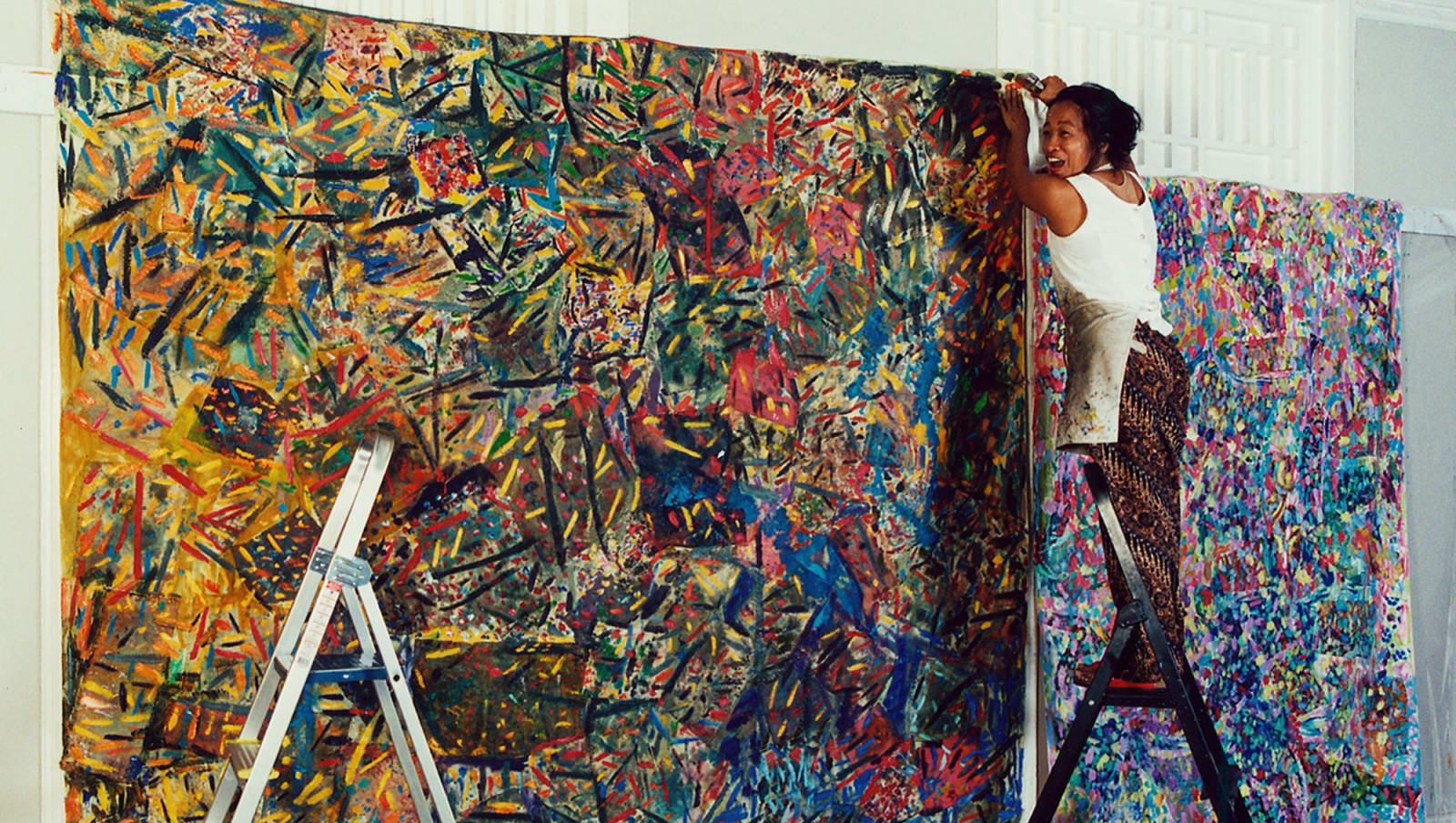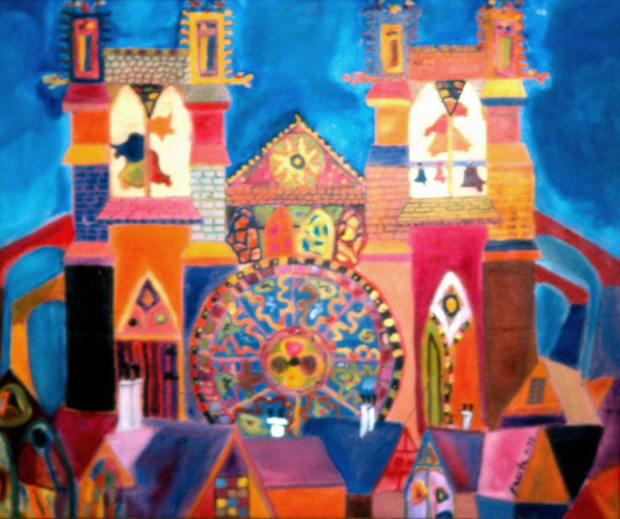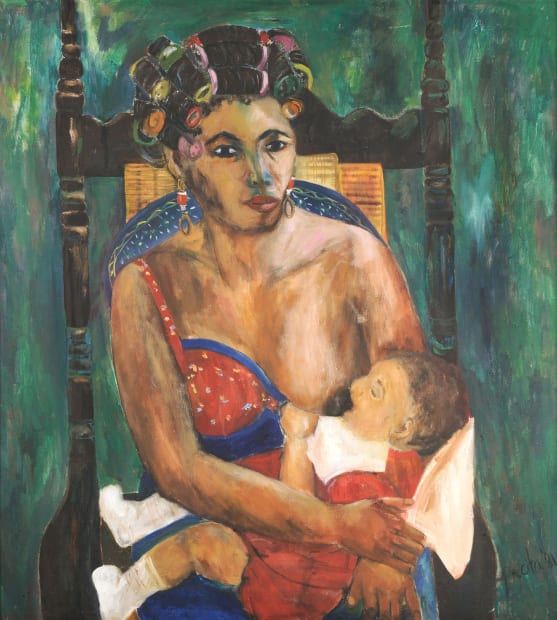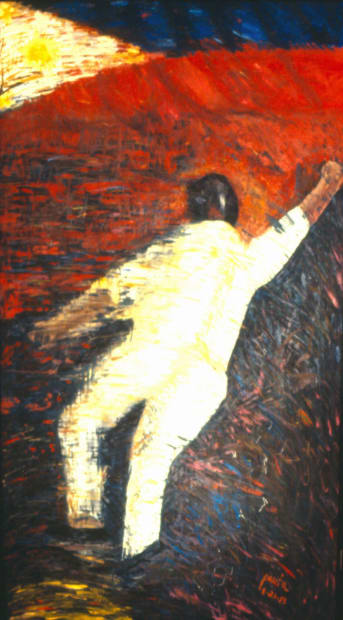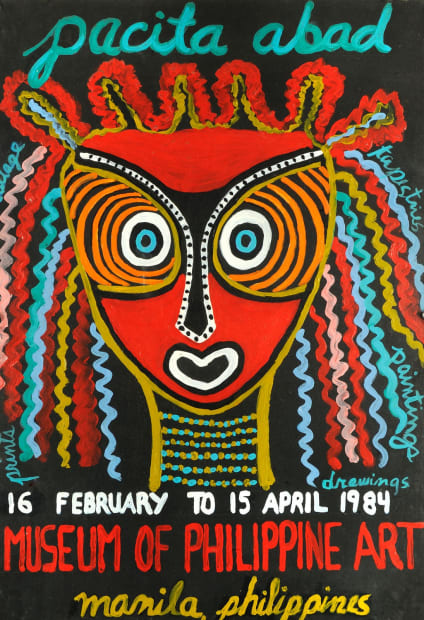-
Pacita Abad's Global Map
A 75-second video tracing Pacita Abad's global travels to more than 60 countries around the world. Courtesy of Silverlens Galleries, Manila/New York. -
BIOGRAPHY
Born in Batanes, Philippines in 1946, Pacita Abad was the daughter of a congressman, who had hoped that she would traverse a similar political path.
Pacita’s trip across Asia to the Philippines through Turkey, Iran, Afghanistan, Pakistan, India, Sri Lanka, Myanmar, Thailand, Laos, Taiwan and Hong Kong drastically changed her life and career plans, as she decided to take up painting instead of law. Married to Garrity, whose work predisposed them to travel to numerous developing countries, her experiences in each place informed her subject matter from the beginning. Traditional art practices like ink-brush painting in Korea, paint brushing the Dominican Republic, batik making in Indonesia, tie-dye in Africa, mirrors in India, shells in Papua New Guinea, were all techniques she introduced either singly or several in one art work. In the late seventies and early eighties Pacita introduced a quilting method trapunto onto her canvasses, which were then layered with objects on top of her quilted material: stones, sequins, glass, buttons, shells, mirrors, printed textile. She referred to this technique, and the process of layering, stuffing, stitching and the collaging of objects on painted canvas as trapunto painting.Characterized by vibrant color and accumulated material, these large scale trapunto paintings traverse a diversity of subject matter: from tribal masks and social realist tableaus depicting the individuals and communities that Pacita encountered throughout her travels, to lush and intricately constructed underwater compositions and abstractions. She lived and travelled in a bewildering amount of countries - from Bangladesh to Sudan, Bangkok to Manila, Jakarta to Yemen, Washington D.C. to Singapore - and it is this itineracy that has defined and shaped her subject matter. Pacita's work brought together images and experiences across cultures, economies and histories and offered reflections on the global long before the discourses of globalization and transnationalism were felt in the art world.Her work has been featured in solo exhibitions at the National Museum, Jakarta, Indonesia; Hong Kong Arts Centre, Hong Kong, The Museum of Philippine Art, Manila; Cultural Center of the Philippines, Manila; Bhirasri Museum of Modern Art, Bangkok, Thailand; Singapore Tyler Print Institute, Singapore; The National Museum for Women in the Arts, Washington, D.C.; and the National Center of Afro-American Artists, Boston, among others. She has participated in numerous group exhibitions, including: Beyond the Border: Art by Recent Immigrant, Bronx Museum of the Arts, New York; Asia/ America: Identities in Contemporary Asian American Art, a traveling exhibition organized by the Asia Society, New York; Olympiad of Art, National Museum of Modern Art, Seoul, Korea; 2nd Asian Art Show, Fukuoka Art Museum, Fukuoka, Japan and La Bienal de Habana, Havana, Cuba. She died in Singapore in 2004.Pacita’s artwork is now in the collections of numerous international museums including: M+, Fukuoka Asian Art Museum, Korea National Museum of Contemporary Art, Taipei Fine Arts Museum, Singapore Art Museum, National Gallery Singapore, Bhirasri Museum, Indonesia Museum Nasional, Ayala Museum, Lopez Museum & Library, Metropolitan Museum of Manila, National Museum of the Philippines, Museum & National Art Gallery of the Northern Territory Australia, Jameel Art Center Dubai, Museo Nacional de Bellas Artes Cuba, Museo de Arte Moderno Santo Domingo, Smithsonian American Art Museum, National Museum of Women in the Arts, Bronx Museum of the Arts, and the Tate Modern. -

-

Pacita and other student leaders meeting with President Marcos
-

Pacita and George Kleiman
-

-

Pacita and Jack Garrity
-

-

-

-

-

-

-

-

-

Pacita's painting 'Death of Ninoy'
-

-

-

Photo: Wig Tysmans
-

-

-

Pacita in Lola Ita play costume
-

'Masks from Six Continents', a 3-year installation at Washington, DC's Metro Center
-

-

-

Photo: Paul Tañedo
-

-

-

-

-

-

-

-

Pacita's glass plates created in Lindshammar
-

-

Photo: STPI
-

Photo: Michael Liew
-

-




